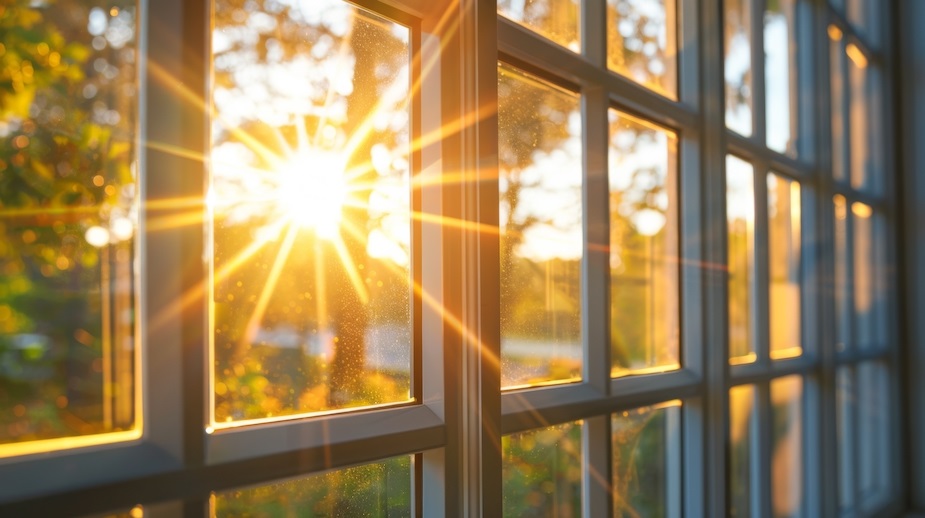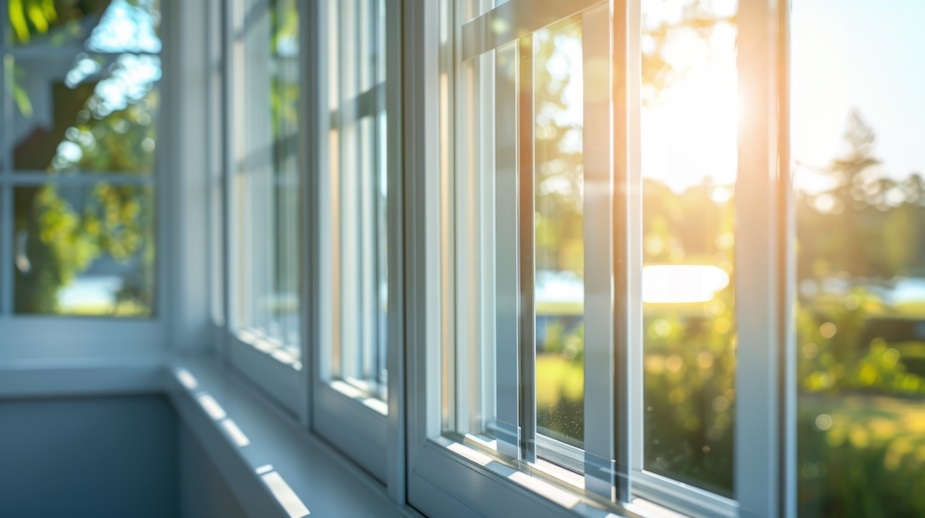
How to Make Your Home More Energy Efficient: A Simple Guide
Did you know that the average household spends over $2,000 a year on energy bills?
Energy efficiency isn't just a buzzword; it's a necessity. Making your home more energy-efficient not only cuts down on these costs but also helps the environment. In this guide, we'll cover easy steps you can take to make your home more energy-efficient.
We'll talk about insulation, heating, cooling, and renewable energy options, providing simple tips to help you save money and energy.
Table of Contents:
- What is Home Energy Efficiency?
- Checking Your Home's Energy Efficiency
- Insulation: The First Step to Energy Efficiency
- Efficient Heating and Cooling Systems
- Windows and Doors: Sealing and Replacing
- Lighting: Making the Switch to LED
- Appliances and Electronics: Choosing Energy-Efficient Models
- Water Heating: Efficient Solutions
- Renewable Energy Options
- Behavioral Changes to Improve Energy Efficiency
- Cost and Savings Analysis
What is Home Energy Efficiency?
Home energy efficiency means using less energy to do the same tasks, cutting down on energy waste.
It includes various methods and technologies to improve how your home uses energy.
Benefits
- Cost Savings: Lower energy bills by reducing energy waste.
- Environmental Impact: Less greenhouse gas emissions help the planet.
- Enhanced Comfort: Better insulation and efficient systems make your home more comfortable.
- Increased Home Value: Energy-efficient homes often have higher resale values.
Checking Your Home's Energy Efficiency
Conduct an Energy Audit
An energy audit is the first step to see how your home uses and loses energy. This check can show where improvements are needed.
- DIY vs. Professional Audits: You can do a basic audit yourself, but hiring a professional ensures a thorough check. Professionals use special tools to find problems that might not be obvious.
Identifying Problem Areas
Common issues found during an energy audit include:
- Leaks: Air leaks around windows, doors, and other openings.
- Poor Insulation: Not enough insulation in walls, attics, and basements.
- Outdated Appliances: Old appliances use more energy than newer, energy-efficient models.
Insulation: The First Step to Energy Efficiency
Importance of Insulation
Insulation helps keep a steady indoor temperature, reducing the need for heating and cooling. Proper insulation can cut energy bills by up to 20%.
Types of Insulation
- Fiberglass: Common and cost-effective.
- Foam: Offers higher insulation values per inch.
- Cellulose: Made from recycled paper and provides good thermal protection.
Where to Insulate
Key areas to insulate in your home include:
- Attic: Heat rises, so an insulated attic prevents heat loss.
- Walls: Exterior walls are major areas of heat transfer.
- Floors: Insulating floors above unheated spaces like garages can prevent heat loss.
Efficient Heating and Cooling Systems
Upgrading HVAC Systems
Modern HVAC systems are much more energy-efficient than older models. Upgrading can save a lot of energy and improve indoor air quality.
- Benefits of Modern Systems: Better temperature control, more environmentally friendly, and often have smart features to optimize energy use.
Regular Maintenance
Maintaining your HVAC system is crucial for efficiency. Regularly changing filters, cleaning ducts, and scheduling annual check-ups ensure your system runs smoothly.
Thermostat Settings
Set your thermostat to optimal settings to save energy. In winter, keep it at 68°F when you're home and lower when you're away. In summer, aim for 78°F when you're home and higher when you're away.
Smart Thermostats
Smart thermostats learn your schedule and adjust temperatures automatically, saving energy without sacrificing comfort. They can be controlled remotely and often come with energy usage reports to help you track savings.
Windows and Doors: Sealing and Replacing
Energy-Efficient Windows
Windows are a big source of energy loss. Consider upgrading to energy-efficient windows which have:
- Double or Triple Glazing: Multiple layers of glass with insulating gas in between.
- Low-E Coatings: Reflect infrared light, keeping heat inside in winter and outside in summer.
- Proper Seals: Prevent air leakage.
Sealing Leaks
Check for and seal leaks around windows and doors. Use caulk for small gaps and weatherstripping for larger gaps to improve insulation.
Weatherstripping and Caulking
Weatherstripping and caulking are cost-effective ways to seal windows and doors. They can significantly reduce drafts and energy loss.
- Weatherstripping: Apply around movable joints like doors and windows.
- Caulking: Best for stationary components like window frames.
Lighting: Making the Switch to LED

Benefits of LED Lighting
LED bulbs use up to 75% less energy and last 25 times longer than incandescent bulbs. They come in different colors to suit different needs.
Choosing the Right Bulbs
When selecting LED bulbs, consider:
- Lumens: Measure of brightness (not watts).
- Color Temperature: Warm (2700K) for living areas, cool (5000K) for task lighting.
- Energy Star Rating: Ensures high energy efficiency and quality.
Maximizing Natural Light
Take advantage of natural light to reduce the need for artificial lighting:
- Open Blinds and Curtains: Allow daylight to enter.
- Use Light Colors: Paint walls and ceilings in light colors to reflect more light.
Appliances and Electronics: Choosing Energy-Efficient Models
Energy Star Ratings
Energy Star-rated appliances meet strict energy efficiency guidelines set by the EPA. Look for the Energy Star label when purchasing new appliances.
Replacing Old Appliances
Older appliances can be energy hogs. Consider replacing:
- Refrigerators: Modern models use significantly less energy.
- Washing Machines: Front-loading models use less water and energy.
- Dishwashers: Newer models are designed to be more water and energy-efficient.
Smart Power Strips
Many electronics use power even when turned off. Smart power strips can cut off power to devices in standby mode, saving energy.
Water Heating: Efficient Solutions
Tankless Water Heaters
Tankless water heaters heat water on demand, which can be more efficient than traditional tank heaters. They use less energy and provide endless hot water.
Insulating Your Water Heater
Insulating your water heater and the first few feet of hot water pipes can reduce heat loss and improve efficiency.
Lowering Water Heater Temperature
Set your water heater to 120°F. This temperature is safe for most household uses and reduces energy consumption compared to higher settings.
Renewable Energy Options
Solar Panels
Solar panels can significantly reduce your reliance on grid electricity. They are a great investment if you have good sun exposure.
- Benefits: Reduced energy bills, potential for selling excess power back to the grid, and long-term savings.
- Considerations: Initial cost, roof condition, and local incentives.
Wind Turbines
For homes in windy areas, wind turbines can be a good renewable energy option. They can provide a lot of electricity and reduce reliance on the grid.
Geothermal Systems
Geothermal systems use the earth's stable temperature to heat and cool your home. They are very efficient and can lower energy bills significantly over time.
Behavioral Changes to Improve Energy Efficiency
Daily Habits
Simple changes in daily habits can lead to significant energy savings:
- Turn off Lights: When leaving a room.
- Unplug Devices: When not in use.
- Use Energy-Saving Settings: On appliances like washing machines and dishwashers.
Energy Monitoring Devices
Use devices like energy monitors to track your energy consumption and identify areas for improvement.
Educating Household Members
Get everyone on board with energy-saving practices to maximize your efforts. Educate family members about the importance of energy efficiency and involve them in implementing changes.
Cost and Savings Analysis
Initial Investments vs. Long-Term Savings
Investing in energy-efficient upgrades can have higher upfront costs, but the long-term savings make it worthwhile. Calculate potential savings using online tools and compare them with the initial investment.
Incentives and Rebates
Many governments and utility companies offer incentives and rebates for energy-efficient upgrades. These can significantly reduce the initial cost of improvements.
DIY vs. Professional Services
While DIY projects can save money, some upgrades, like installing solar panels or upgrading HVAC systems, are best left to professionals. Evaluate the cost and benefits of DIY versus hiring experts.
Final Thoughts
Making your home more energy-efficient is a smart investment for your wallet and the environment.
From insulating your attic to switching to LED bulbs, each step contributes to a greener home. Start with an energy audit, prioritize the most impactful upgrades, and involve your family in adopting energy-saving habits.
Your efforts will pay off in lower energy bills, a more comfortable home, and a reduced carbon footprint.
Additional Resources
- U.S. Department of Energy: Energy Saver Guide: Comprehensive tips on saving energy at home.
- Energy Star: Information on energy-efficient products and practices.
- Local Programs and Rebates: Database of State Incentives for Renewables & Efficiency (DSIRE).
Contact Reeves Custom Homes for expert advice and personalized recommendations.
Reach out to us today to get started on crafting your dream home!
For more information on custom home features, check out our related articles on modern house features and building materials for coastal homes.
